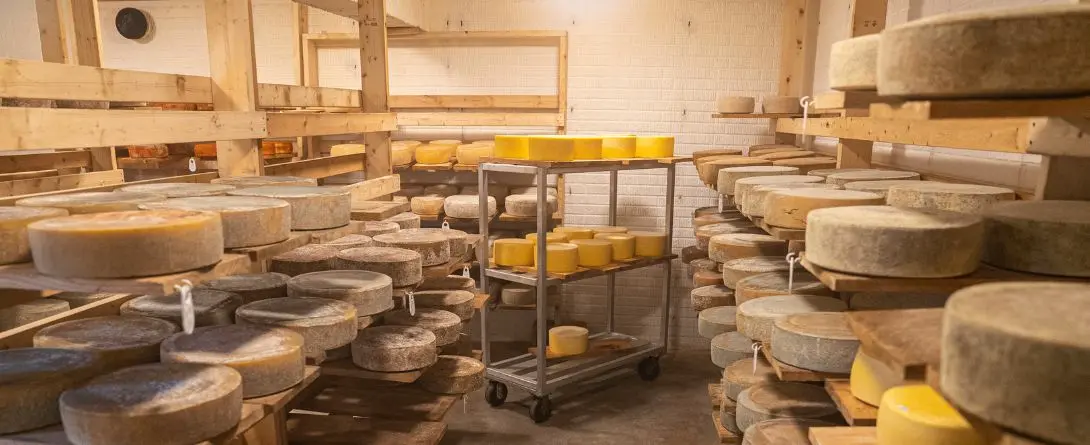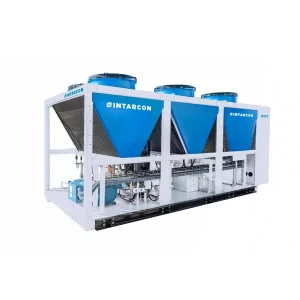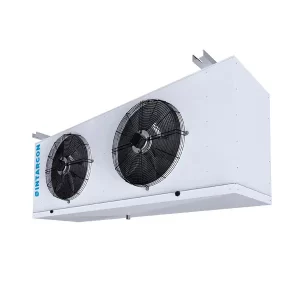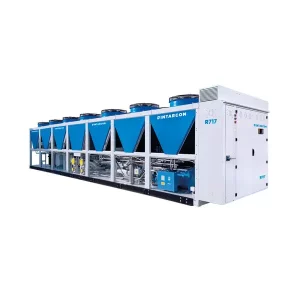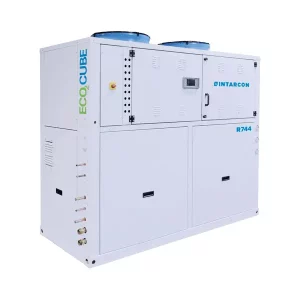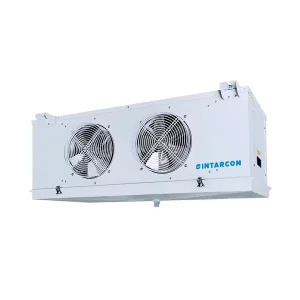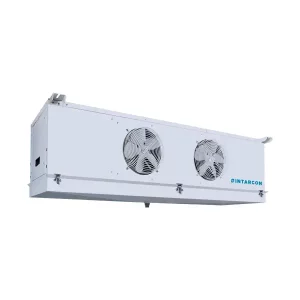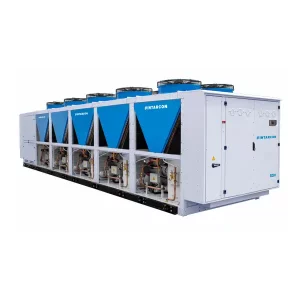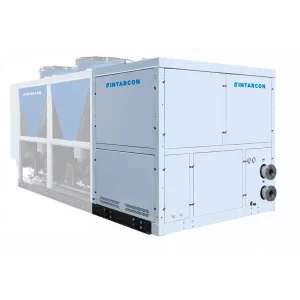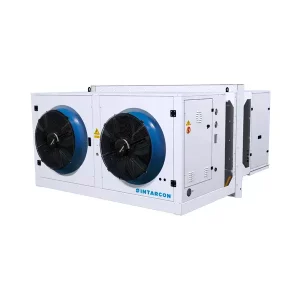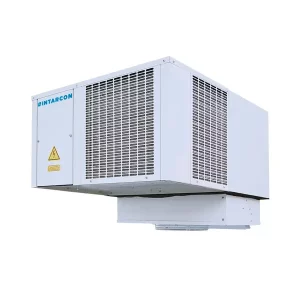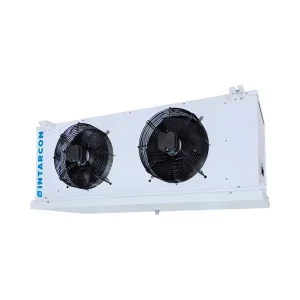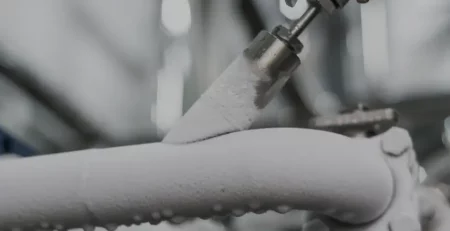Refrigeration in food processes: Efficiency and sustainability
INTARCON2024-10-28T08:21:22+01:00Refrigeration in food processes plays a key role in ensuring product quality and safety. From preserving fresh and processed foods to transport, maintaining the right temperature is essential to prevent bacterial growth and prolong the shelf life of products.
However, in recent years, energy efficiency has become more important, not only for cost reduction, but also to meet environmental sustainability objectives.
In this post, we will delve into how advances in refrigeration, and mainly the use of natural refrigerants, are revolutionising the food sector in terms of efficiency and sustainability, as their impact is high.
Why is refrigeration in food processes essential?
The importance of food refrigeration is key in the supply chain in the food industry. Ensuring an adequate temperature not only guarantees the quality of the product, but also prevents the proliferation of microorganisms that can compromise the health of the consumer and its preservation in optimal conditions for consumption. Sectors such as meat, dairy, fruit and fish rely heavily on refrigeration systems to preserve products in optimal conditions during storage and distribution.
In addition, temperature control is very important to comply with the strict food safety regulations in force. A failure in the refrigeration systems can have serious consequences, both in terms of safety and economic losses for consumers, manufacturers, distributors…
Types of Refrigeration solutions in food processes
In the food industry, there are different types of Refrigeration in food processes to ensure optimal preservation of products:
- Vapour compression refrigeration: this is the most commonly used method, both in conventional refrigerators and in preservation chambers. It uses a refrigerant gas that circulates to cool the products by extracting their heat.
- Absorption refrigeration: This works in a similar way to vapour compression, although in this case heat is used instead of electricity to move the refrigerant, and is notable for being more efficient.
- Cryogenic refrigeration: this cools products to very low temperatures quickly, using gases such as nitrogen, this technique is known as deep-freezing, although it is not valid for all foods.
- Air cooling: this is the most widespread method and is compatible with the type of food, using fans that circulate cold air rapidly around the products, ensuring uniform cooling, commonly used in cold rooms.
- Immersion cooling: products are immersed in cooling liquids to cool them rapidly. It is usually used in more specialised industrial processes, although it is not suitable for any type of product.
These methods are key to ensuring freshness and food safety depending on the needs of the product.
Key features of choosing an efficient cooling system
In order to choose a refrigeration system or equipment according to your needs, it is crucial to consider several factors:
- Energy efficiency: Environmental sustainability is crucial in today’s world, so refrigeration systems must be energy efficient in terms of environmental impact and energy costs.
- Regulatory compliance: Currently, there are a multitude of regulatory standards on the use of refrigerant gases and food safety.
- Refrigeration needs: the size of the project is fundamental, as the equipment must be adapted to the different volume and temperature control needs intrinsically necessary, thus achieving optimum performance and savings.
Sustainable refrigeration solutions: The role of natural refrigerants
The use of natural refrigerants, such as CO2, ammonia and hydrocarbons, is marking a new era in refrigeration. These gases have low or no global warming potential (GWP) compared to traditional refrigerants.
Benefits of natural gases in refrigeration
The use of natural refrigerants is not only a sustainable option, but also offers several operational benefits:
- Improved energy efficiency.
- Increased cooling capacity.
- Reduced carbon footprint.
Innovation and technology in refrigeration by INTARCON
At INTARCON, we are committed to innovation in industrial refrigeration, developing solutions that not only meet the highest standards of energy efficiency, but also respond to today’s sustainability needs.
Ammonia or R717 refrigeration solutions
Ammonia refrigeration, NH3 or R717, a natural refrigerant of type L2, is mainly used in large industrial plants or chillers due to its excellent thermodynamic properties, allowing temperatures as low as -70 °C to be reached.
These systems, due to their size, allow for high performance and efficiency. Advanced technology, such as Ammolite’s, reduces the refrigerant charge, improving efficiency and performance.
The main benefits of the NH3 cooling system, especially those developed by INTARCON, include:
- Higher performance compared to other gases such as R290 and CO2.
- Energy efficiency, reducing electricity consumption and offering a quick return on investment.
- Low maintenance thanks to a compact and optimised design.
- Reliability and safety, with current regulations that guarantee its safe use, and easy detection of leaks due to its characteristic odour.
- Sustainability, as it is a natural refrigerant with zero GWP and ODP.
- Cost-effectiveness, as its low cost and abundance make it an economical option.
- Reduced refrigerant charge, energy-efficient components and canister-free design.
- No need for a machine room, with built-in air condensers for outdoor installation.
- No water consumption, eliminating the risk of legionellosis.
- Compatibility with indirect variable flow glycol refrigeration systems (optional).
- Lower manufacturing cost due to the use of smaller diameter pipes in the refrigeration system.
- In summary, NH3 refrigeration is a highly efficient, cost-effective, safe and environmentally friendly option, ideal for industrial applications.
CO2 or R744 refrigeration solutions
INTARCON’s CO2 or R744 refrigeration solutions are an effective alternative for both commercial and industrial applications. R744 is a popular natural refrigerant because of its low environmental impact, compared to other traditional refrigerants, and because it complies with current regulations, such as F-Gas. Its Ozone Depletion Potential (ODP = 0) and low Global Warming Potential (GWP = 1) make it a sustainable option.
The main advantages of CO2 refrigeration technology include:
- Economical: It provides a quick return on the initial investment, being a sustainable investment with no risk of obsolescence.
- Easy installation: Systems can be mounted outdoors without the need for a machine room, and can include remote control by kiconex.
- Safe: CO2 is a natural refrigerant, non-flammable, non-toxic (A1 classification), and with a high heat transfer coefficient, which makes it efficient and safe.
- High performance in hot climates, with low energy consumption.
- Sustainability: It has no long-term side effects, and is abundant as a by-product of various industrial processes.
In short, CO2 refrigeration is efficient, economical, safe and environmentally friendly, making it an ideal solution for a variety of applications.
Refrigeration solutions with propane or R290
INTARCON offers efficient and environmentally friendly refrigeration solutions with R290, commonly known as propane, a class A3 natural refrigerant with low environmental impact (GWP = 3). R290 or propane stands out for its high thermodynamic performance and low toxicity, although it is highly flammable. Its use is regulated in Europe according to EN378 and F-Gas regulations, limiting the refrigerant charge according to the application and location.
The main advantages of R290 cooling include:
- Energy efficiency: Thanks to its thermodynamic properties and smaller displacement compressors, it reduces electricity consumption and improves performance, especially in industrial equipment.
- Climate adaptability: R290 is more efficient than HFCs in hot climates.
- Wide range of application: Suitable for commercial and industrial systems, with optimum compatibility with other components.
- Reduced refrigerant charge: Offers the same performance as other refrigerants with only 40% charge.
- Green alternative: In the long term, it is a sustainable option that is well received in the market.
INTARCON offers a range of products incorporating kiconex technology and technical advice to tailor R290 refrigeration solutions to the specific needs of each customer.
The future of refrigeration: sustainability and energy efficiency
Refrigeration in food processes is not just a trend, but a necessity to ensure a sustainable future. In an environment where regulations on emissions and energy efficiency are becoming more and more restrictive.
INTARCON’s systems are a clear example of how technology can be an ally in the creation of solutions that benefit both companies and the environment.
